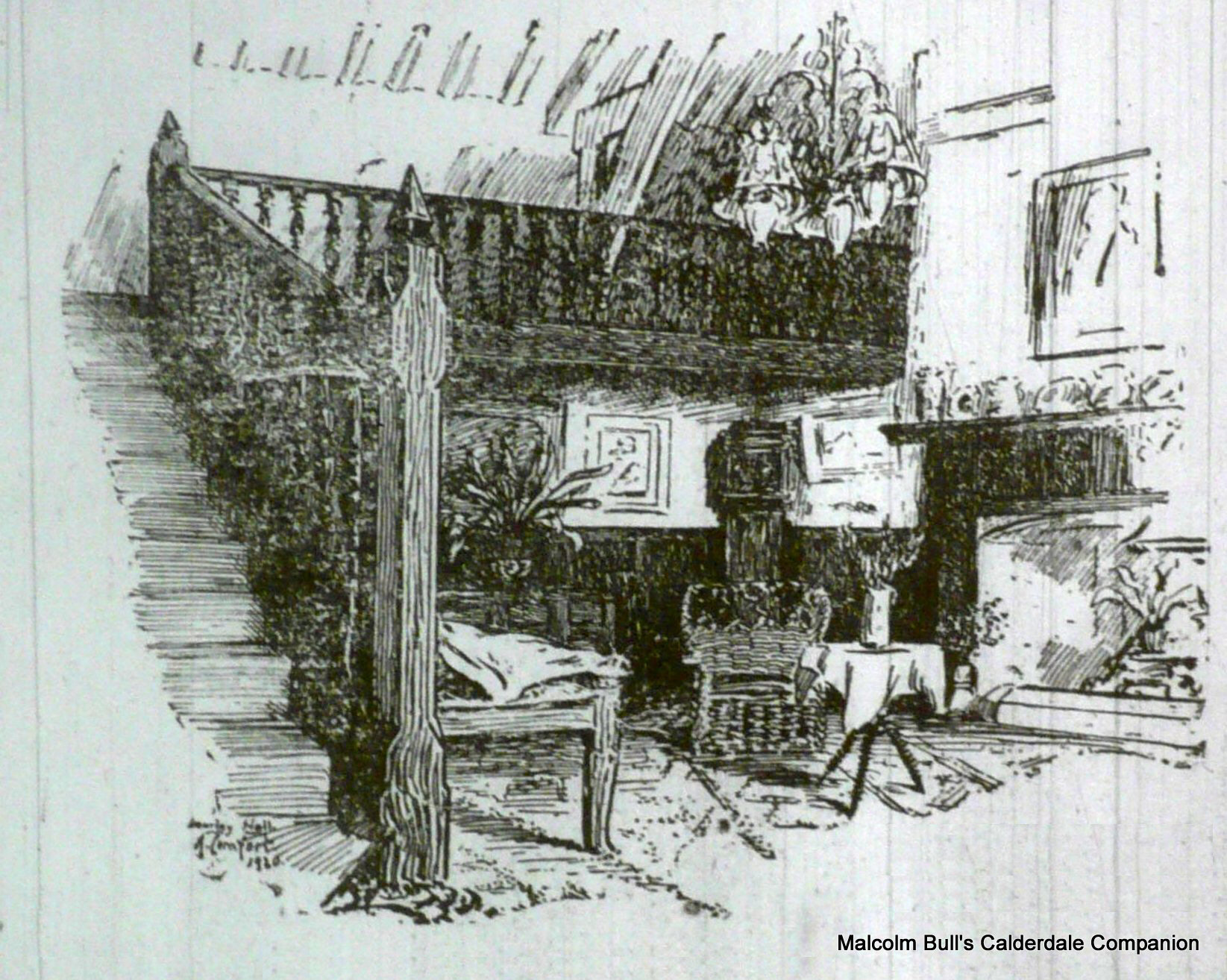

Arthur Comfort Drawing














|
Pleasantly situated on a mound at the foot of Brearley Wood, and commanding a fine view of Calder Valley, with the old Norman tower of St. Peter's Church, Sowerby, away on the opposite slope, stands Brearley Hall. Dating back somewhere into the early 14th century, this fine, many-gabled mansion has successively been the home of such distinguished local families as the Soothills, Lacys, Farrers, Lockwoods, Whitakers and Sutcliffes, the present owner being Mr Gamaliel Sutcliffe, JP, Heptonstall Slack. But it is probably the name of Dr John Fawcett, the eminent divine, which is today most often linked with residence at Brearley Hall. He first made the place his own in the spring of 1776, and for 20 of his most active years he occupied the mansion. His famous Academy. the forerunner of Rawdon College, was founded here, and amongst his pupils were John Foster, the essayist, and William Ward, the missionary. A good deal of Fawcett's literary work was done at Brearley, and in additions to the educational associations of the place, regular public services were held on Sundays. It was in the latter connection that the Central Hall, so clearly depicted in this sketch, was brought into use. Reference to this is to be found in the Life of John Fawcett, by his son: "Agreeably to the ancient style of building, the house, being partly in the castellated form, contained, in the middle, a large room or hall, the height of the building, with a gallery on one side. Whether these apartments were originally intended for courts of justice, or merely for the purpose of festal entertainments, cannot be ascertained, but it is now consecrated to a purpose for which it had, in all probability, never been used before. A lecture on Lord's Day evenings was opened in the hall above mentioned, and continued for many succeeding years. On summer eves the scene was often highly interesting, while many, not only of those who made a profession of Christianity, but others who had lived in the neglect of religious duties, joined in these evening oblations, and afterwards became regularly attendant, in public worship."Since Fawcett's time extensive structural alterations have been made to the interior but the old staircase and gallery, from which the Doctor addressed assemblies of worshippers and classes of theological pupils, remains intact. Originally open to the roof, the hall has now been underdrawn, and the old diamond-shaped windows and much of the oak panelling have been remove
This image [JNM6.JPG] is taken from The Halifax Weekly Courier
Page Ref: PH290
|
||
| site search by freefind |